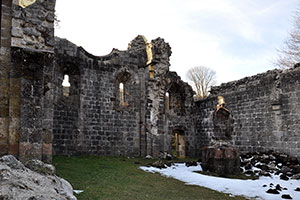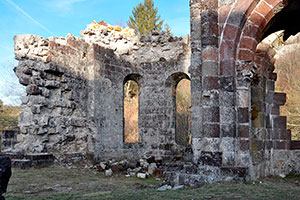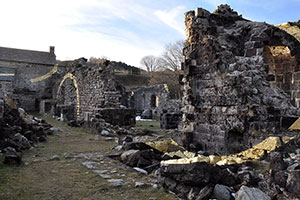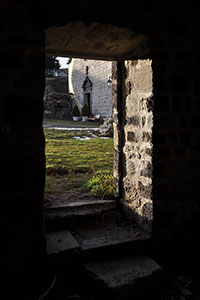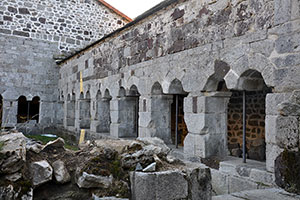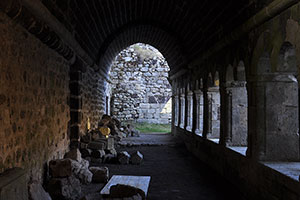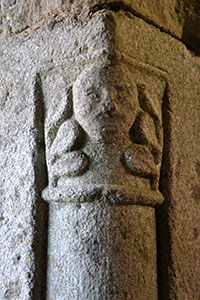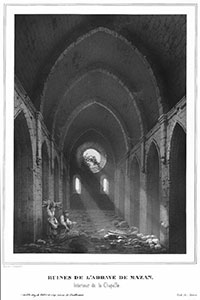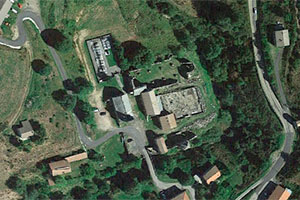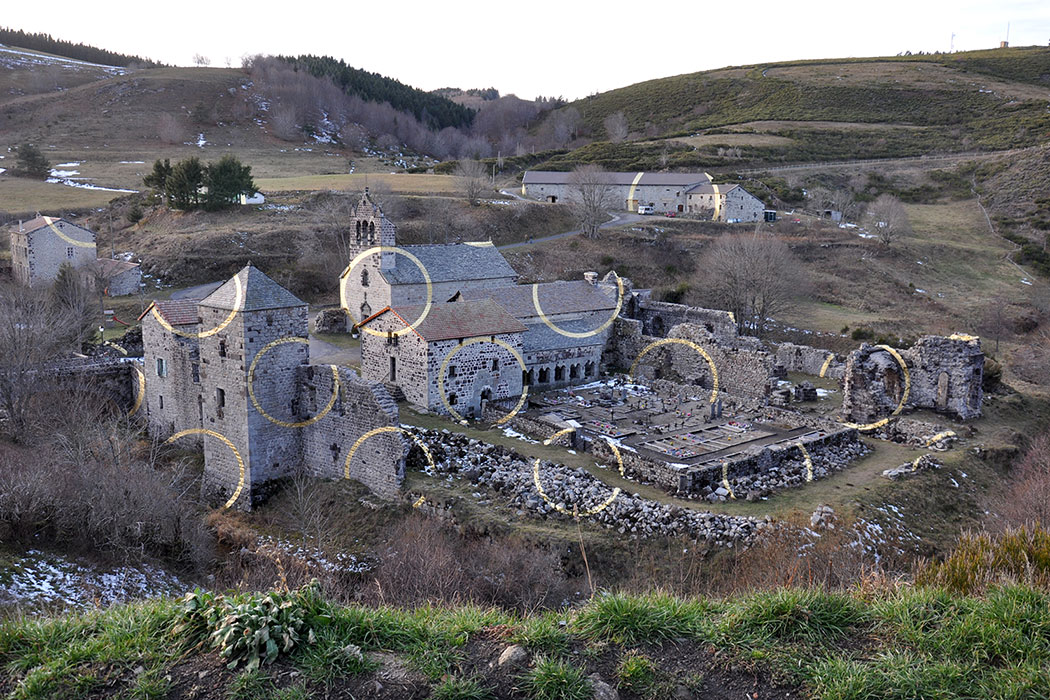
The Cistercian Abbey of Mazan originated from a small eremitic settlement where, between 1119 and 1123, a modest community gathered under the protection of the bishop of Viviers, who appointed the canon Pierre Itier as its superior. The local lords granted the first occupants the estate known as Mansus Adam, from which the present toponym Mazan derives.
The community of Mazan established contact with the Cistercian Abbey of Bonnevaux (Isère) and joined the Order of the Cistercians, a process already completed by 1123. Despite the site’s limitations —a harsh climate and isolation— donations enabled its development and the formation of a large landed domain. Within a few years it was even able to found several daughter abbeys: Silvanès (Aveyron) and Le Thoronet (Var) in 1136, Sénanque (Vaucluse) in 1148 and Bonneval (Aveyron) in 1161. For Mazan, this was a period of marked prosperity..
In 1217, Pope Honorius III placed Mazan under his direct protection, removing it from episcopal authority, and in the same document confirmed its possessions. Later, however, the abbey suffered the consequences of the Hundred Years’ War, from which it never fully recovered; in the wake of the conflict, the site was fortified. It also endured the commendatory regime and the Wars of Religion. Nevertheless, the community managed to survive, albeit precariously, until the Revolution.
The abandonment of the site by the monastic community led to the dismantling of much of its structures, reused as a convenient stone quarry, despite some isolated attempts at preservation. Even so, in 1840 the church was still standing in its entirety, but towards the end of the nineteenth century it was severely damaged by floods that once again ravaged the site. This, together with the isolation of the area, brought the monastic ensemble to near-total ruin until restoration and protection works began in the second half of the twentieth century.
Affiliation of Mazan
According to Originum Cisterciensium (L. Janauschek, 1877)- AUBERT, Marcel (1943). L’architecture cistercienne en France. Vol. I. París: Ed. d’Art
- COTTINEAU, Laurent-Henri (1939). Répertoire topo-bibliographique des abbayes et prieurés. Vol. 2. Mâcon: Protat
- DU BOYS, Albert (1842). Album du Vivarais, ou Itinéraire historique et descriptif de cette ancienne province. Grenoble: Prudhomme
- JANAUSCHEK, Leopoldus (1877). Originum Cisterciensium. Vol. 1. Viena
- JOUNEAU, Davi; i altres (2014). Abbaye de Mazan. Rapport final d’opération d’archéologie préventive
- RAYMONDON, M. (1858). Coup-d'oeil rétrospectif sur les monuments historiques du département de l'Ardèche. Congrés Archéologique de France. París: Derache
- RÉGNÉ, Jean (1821-22). L'abbaye de Mazan. Revue du Vivarais. Aubenas: Habauzit
- SAINT-JEAN, Robert (1968). L'abbaye cistercienne de Mazan (Ardeche) et ses filles provençales, Sénanque et le Thoronet. Revue Provence historique. T. 18
- SAINT-MAUR, Congregació de (1865). Gallia Christiana in provincias ecclesiasticas distributa. Vol. 16. París: Firmin Didot


